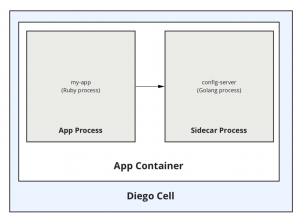Blog
You can become a superhero of automation and development by learning and practicing. This is our blog from our learnings and practice.
We are consultants and trainers in Cloud Foundry, devops automation and continous delivery. We have the best jobs in the world helping you have the best job in the world.

In general, it is not a good idea to have all of your infrastructure sitting on the public internet. AWS solves this issue by creating VPCs (Virtual Private Clouds) which have private subnets to sequester servers that should not be directly exposed to the internet. While this allows for greater security, it also creates a

Why are we interested in Postgres on Kubernetes? I gave a talk last week on beginning the journey to getting PostgreSQL running on Kubernetes at the Buffalo Web Developers Database Meetup. There were examples on a simple deployment, configuring stateful sets, adding persistent volume claims and even a liveness probe. What I wanted to show

Developing against BOSH, UAA, CredHub, and Concourse has never been easier, with the new Docker Desktop for macOS support of BUCC (introduced in version 0.7.1). If you have not already, get Docker Desktop (tested with 2.0.0.3) here. Make sure to allocate enough memory (tested with 8GB) to the Docker Desktop VM: Now let’s deploy BUCC:

Chad asked how to he could get FreeTDS into his Cloud Foundry application so he could use the RubyGem tiny_tds. The answer for adding system-level libraries or CLIs is to use a new supply buildpack, and so I made Chad a new buildpack https://github.com/starkandwayne/freetds-buildpack. Chad asked a good question – “but how do I use

Sidecars allow additional processes that share filesystem and socks with a Cloud Foundry application. We investigate separating these concerns from app developers by distributing and installing them with Buildpacks. This article is almost Part 3 in a 5-part series. Part 1 starts with Tim Downey’s How to Push an App to Cloud Foundry with Sidecars.

Package management has not been part of core Golang before. Each year, there has been a different de facto standard. In recent years, it was “official [core team] experiment” dep. Finally, we have Go Modules. In this blog post I’ll share the quick guide starting a new project with Go Modules and the solution to

This is the second part of my journey as a Cloud Foundry operator learning about the various components Kubernetes by comparing the components to functionalities I know in Cloud Foundry. The start of this series is here: https://starkandwayne.com/blog/mental-migration-a-cf-operators-perspective-on-starting-kubernetes/ Source of Truth – Cloud Foundry In Cloud Foundry land there are relational databases that contain the

Sidecars allow additional processes that share filesystem and socks with a Cloud Foundry application. We investigate separating these concerns from app developers by distributing and installing them with Buildpacks. This article is almost Part 2 in a 5-part series. Part 1 starts with Tim Downey’s How to Push an App to Cloud Foundry with Sidecars.

We’ve been doing a lot of interior plumbing work on SHIELD, shoring up the internal processes, the scheduler, etc. However, today I want to talk about a more visible change coming in the 8.2.0 release: Short UUIDs! Less, as they say, is more. UUIDs are typically around 40 characters long (including the hyphens). They’re great